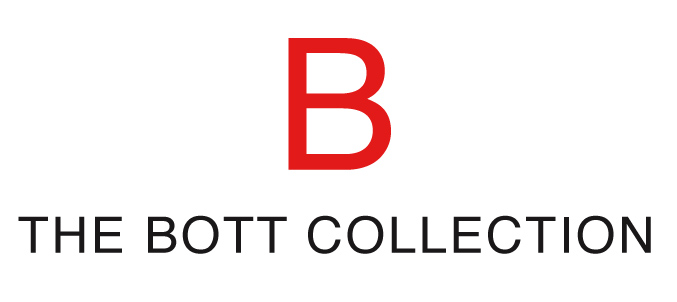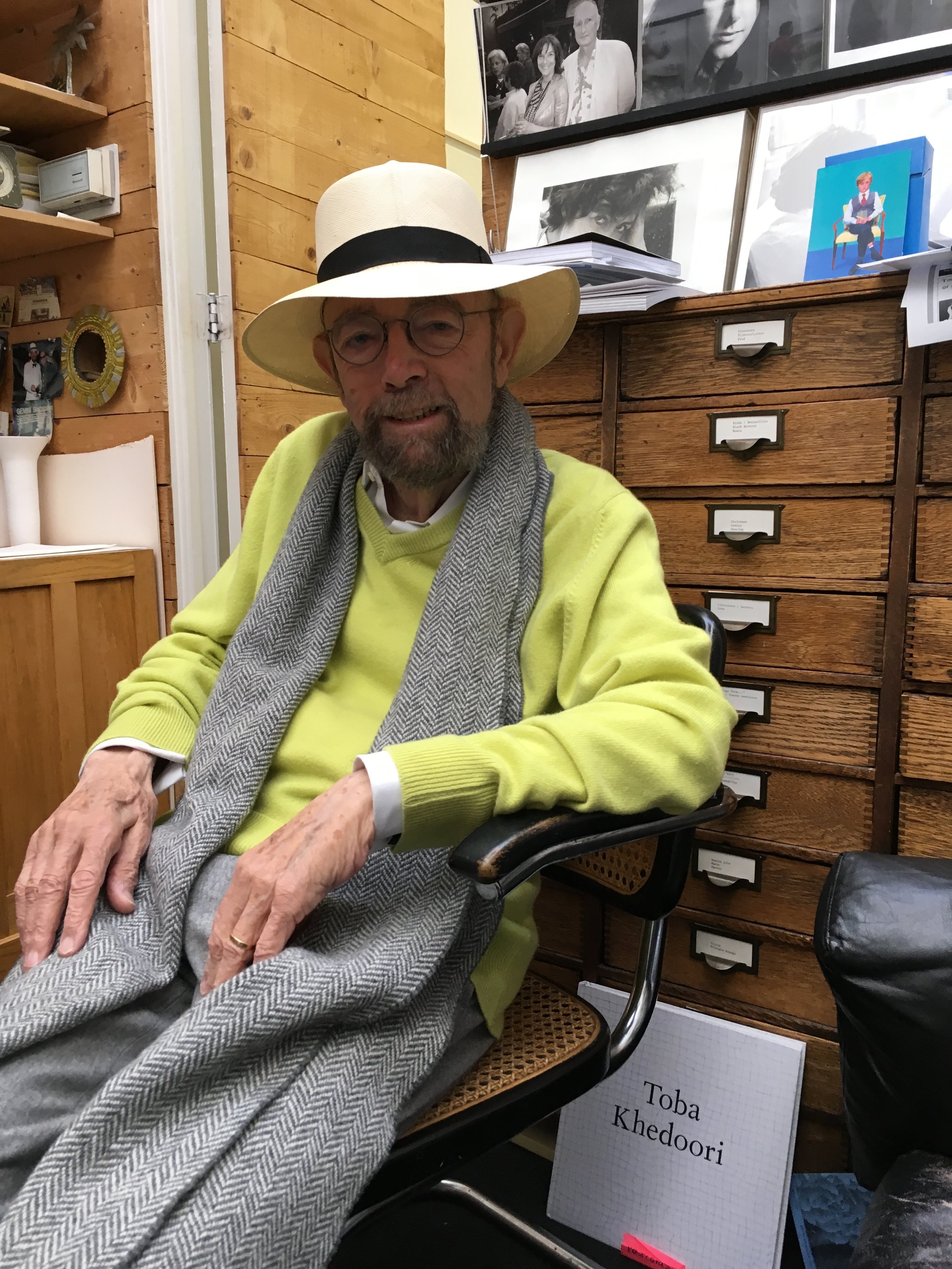May 1 ,2018
Sidney Felsen, November 2017
In 1966, Sidney Felsen and Stanley Grinstein, and master printer Ken Tyler founded Gemini G.E.L., a Los Angeles–based artists’ workshop and a publisher of hand-printed limited edition lithographs, screenprints, etchings, and sculptures by established contemporary artists. In the past 52 years, Gemini G.E.L. has worked with a wide range of artists, including John Baldessari, Tacita Dean, Jasper Johns, Elssworth Kelly, Roy Lichtenstein, Julie Mehretu, and Robert Rauschenberg and Richard Serra. In 1973, Ken left to found his own workshop on the East Coast; Stanley passed away in 2014. At 93, Sidney still oversees operations and fosters the company’s relationships with artists. Recently, I flew to Gemini G.E.L.’s workshop in Los Angeles to hear Sidney’s stories about working with artists and running the business side of such an influential endeavor.
Renee Bott: How did you end up founding a fine-art press?
Sidney Felsen: In college, I majored in accounting and had zero interest in art. Then I had a girlfriend whose family had abstract images on the wall. I just didn’t get it. But I liked her and her family, and I thought if they liked these pictures, there must be something to it. So I started reading about art, and then going to art galleries. I regularly went to La Cienega, where the art scene was in Los Angeles in the 1950s and 60's. I took night classes at art schools for over 15 years. I had zero idea of making art. But I liked the idea of being in art classes. I got very friendly with a lot of my teachers and classmates which led to longtime friendships.
I’d gone to college with Stanley Grinstein. We were fraternity brothers. He and I had no interest in art when we were in school. But then he got married a couple years after we graduated in 1950, and his wife, Elyse, was very interested in contemporary art. They became pretty serious about collecting. They were buying works by Rauschenberg and Stella and Lichtenstein and other contemporary artists.
I was a CPA at the time. I had an office and a partner. Two or three galleries on La Cienega were clients of mine. They were importing prints from Europe—the usual suspects, Chagall and Picasso and Miro. I said to Stanley one day, “It would be interesting if we started a little workshop here and got to know artists and build a print collection.” He said, “I don’t know anything about it. But if you want to do it, I’ll do it with you.”
We needed a printer. Coincidentally, Ken Tyler had recently started a for-hire lithography shop called Gemini Limited. He had been technical director at Tamarind Lithography Workshop before that. So Stanley and Elyse invited him to their annual Christmas Eve party, and we asked him to join us in a new partnership - to be publishers.
Current Gemini Printers: (right to left) Case Hudson, Amy Jo Toucey, Oliver Dewey-Gartner. Xavier Fumat, Issac Osher handle paper to print a Richard Serra intaglio.
In essence, we bought into his business. We kept the same location, in the back of a frame shop, and changed the name to Gemini G.E.L., which stood for Graphic Editions Limited.
RB: How did you start working with artists?
SF: Ken had worked with Josef Albers at Tamarind, and they had become friends. Ken asked Albers if he would help us get started. He would send a shirt to the laundry and get it back with a cardboard in it; then collected the cardboards. He would paint squares, tear it in half, give us half, and keep half. That was our first publishing venture. Albers was very kind to us. He said we didn’t owe him any money, just give him a portion of the edition. So that’s what we did.
RB: After you make the object, you have to sell it. How did you go about doing that?
SF: We decided to advertise in Artforum and Art in America. The Albers prints were our first ad. The series was called White Line Squares. It was a white line between one of three colors. It showed how color is so influenced by what’s around it. So we put an ad in Artforum in the June 1966 issue. I carried the copy right over—Artforum was three blocks away on La Cienega. I handed it to this kid. Well, this kid was Ed Ruscha. He was doing the layouts for Artforum. Our ad showed a yellow White Line Square. We got about 300 responses. I think the prepublication price was $100, and $125 was the publication price. People sent us cash and checks to buy our first publication.
So next we asked Bob Rauschenberg if he would do something. He came out in February of 1967. When I picked him up at the airport, he said, “I’m thinking about doing a self-portrait of inner man.” Whatever that meant. The next morning, he asked, “Do you have any friends that are X-ray doctors?” By another amazing coincidence, my closest friend from high school had become an X-ray doctor. So I took Bob to meet Dr. Jack Waltman.
What Bob wanted was an X-ray from head to toe, one plate. We found out that X-ray machines generally create a one-foot-long image. We did six 1-foot plates, which I think was a lot more interesting. That was Booster. We didn’t have a stone big enough, so we actually put two stones together and then we filled it in. The print was six feet long by three feet wide.
RB: In the early years, did Ken handle all the printing?
SF: When we amalgamated with Ken, he already had two printers. They both stayed with us. Long Beach State College [now California State University, Long Beach] had a really good printer teaching there named Bob Evermon, and he had great students. We hired them, and Ken taught them.
RB: After Booster, what next?
SF: Bob Rauschenberg helped us get Claes Oldenburg. And Frank Stella would visit Bob and stay almost all day a lot of times. Bob always liked to have three or four people in the studio with him. The TV was on. The soaps were on. He was a serious soap fan.
We had bought a shipment of stones from a commercial print shop that was changing over to offset lithography. They were 23” x 17”, which is pretty small, and they were not very thick. A whole stack of them were sitting in the workshop. While Bob was talking to Frank, he picked up a stone on the top and handed it to him and said, “Why don’t you try drawing on this?” Frank was probably 25 or 27 years old at the time. And he did. He drew what’s called the Black Series, based on his Black Paintings. So we had Albers and Rauschenberg and Stella and Oldenburg. Then we got brave, and I wrote a letter to Jasper Johns. He said yes. That shocked me. And then locally, Ed Ruscha did a couple of things with us, as well as Ken Price. Now we’re up to 1968. So in three years, we’d worked with all these great artists.
Photographs line the walls of Sidney's office at Gemini G.E.L.
RB: So today, who finds artists to work with? How is the company run?
SF: Stanley and I did. When Stanley was alive, I had one partner: Stanley. When he died three years ago I invited his two daughters to work here; my daughter, Suzanne; and my wife, Joni. So now there are five working partners. As far as inviting a new artist to work with us, we pretty much have to agree. We have made three decisions in the last five years or so. One was Julie Mehretu, one was Tacita Dean, and one is Analia Saban. They’ve all been fantastic. In the early days, everything here was male. It was all-male art.
My job, then and now, is handling artist relationships and running the workshop. I’m an administrative manager of the workshop. I’m not a printer, and there are a lot of things I don’t understand. But I use my common sense. Plus, I’ve been around it so long. One of these days, we’ve got to go to the next step and say, “Who’s going to take over my job? And what will each of the four do?" It's one of the next important questions facing management.



